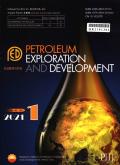Construction and application of favorable target evaluation system for hot dry rock
IF 8
Q1 ENERGY & FUELS
引用次数: 0
Abstract
China has abundant resources of hot dry rocks. However, due to the fact that the evaluation methods for favorable areas are mainly qualitative, and the evaluation indicators and standards are inconsistent, which restrict the evaluation efficiency and exploration process of dry hot rocks. This paper is based on the understanding of the geologic features and genesis mechanisms of hot dry rocks in China and abroad. By integrating the main controlling factors of hot dry rock formation, and using index grading and quantification, the fuzzy hierarchical comprehensive method is applied to establish an evaluation system and standards for favorable areas of hot dry rocks. The evaluation system is based on four indicators: heat source, thermal channel, thermal reservoir and cap rock. It includes 11 evaluation parameters, including time of magmatic/volcanic activity, depth of molten mass or magma chamber, distribution of discordogenic faults, burial depth of thermal reservoir, cap rock type and thickness, surface thermal anomaly, heat flow, geothermal gradient, Moho depth, Curie depth, Earthquake magnitude and focal depth. Each parameter is divided into 3 levels. Applying this evaluation system to assess hot dry rock in central Inner Mongolia revealed that Class I favorable zones cover approximately 494 km2, while Class II favorable zones span about 5.7×104 km2. The Jirgalangtu Sag and Honghaershute Sag in the Erlian Basin, along with Reshuitang Town in Keshiketeng Banner, Reshui Town in Ningcheng County, and Reshuitang Town in Aohan Banner of Chifeng City, are identified as Class I favorable zones for hot dry rock resources. These areas are characterized by high-temperature subsurface molten bodies or magma chambers serving as high-quality heat sources, shallow thermal reservoir depths, and overlying thick sedimentary rock layers acting as caprock. The establishment and application of the evaluation system for favorable areas of hot dry rock are expected to provide new approaches and scientific basis for guiding the practice of selecting hot dry rock areas in China.
干热岩有利目标评价体系的构建与应用
中国有丰富的干热岩资源。但由于有利区评价方法以定性为主,评价指标和标准不一致,制约了干热岩评价效率和勘探进程。本文在对国内外干热岩地质特征和成因机制了解的基础上进行了研究。通过综合热干岩形成的主要控制因素,采用指标分级和量化的方法,应用模糊层次综合法建立了热干岩有利区评价体系和评价标准。评价体系以热源、热通道、热储层和盖层4个指标为基础。包括岩浆/火山活动时间、熔融体或岩浆房深度、深裂断裂分布、热储埋藏深度、盖层类型和厚度、地表热异常、热流、地温梯度、莫霍深度、居里深度、地震震级和震源深度等11个评价参数。每个参数分为3个级别。应用该评价体系对内蒙古中部干热岩进行评价,ⅰ类有利带面积约为494 km2,ⅱ类有利带面积约为5.7×104 km2。二连盆地吉嘎朗图凹陷、红哈尔舒特凹陷与赤峰市克石克腾旗热水塘镇、宁城县热水塘镇、敖汉旗热水塘镇被确定为一类干热岩资源有利带。这些地区的特点是高温地下熔融体或岩浆房作为高质量的热源,热储深度较浅,上覆厚沉积岩层作为盖层。热干岩有利区评价体系的建立与应用,有望为指导中国热干岩有利区选择的实践提供新的思路和科学依据。
本文章由计算机程序翻译,如有差异,请以英文原文为准。
求助全文
约1分钟内获得全文
求助全文

 求助内容:
求助内容: 应助结果提醒方式:
应助结果提醒方式:


